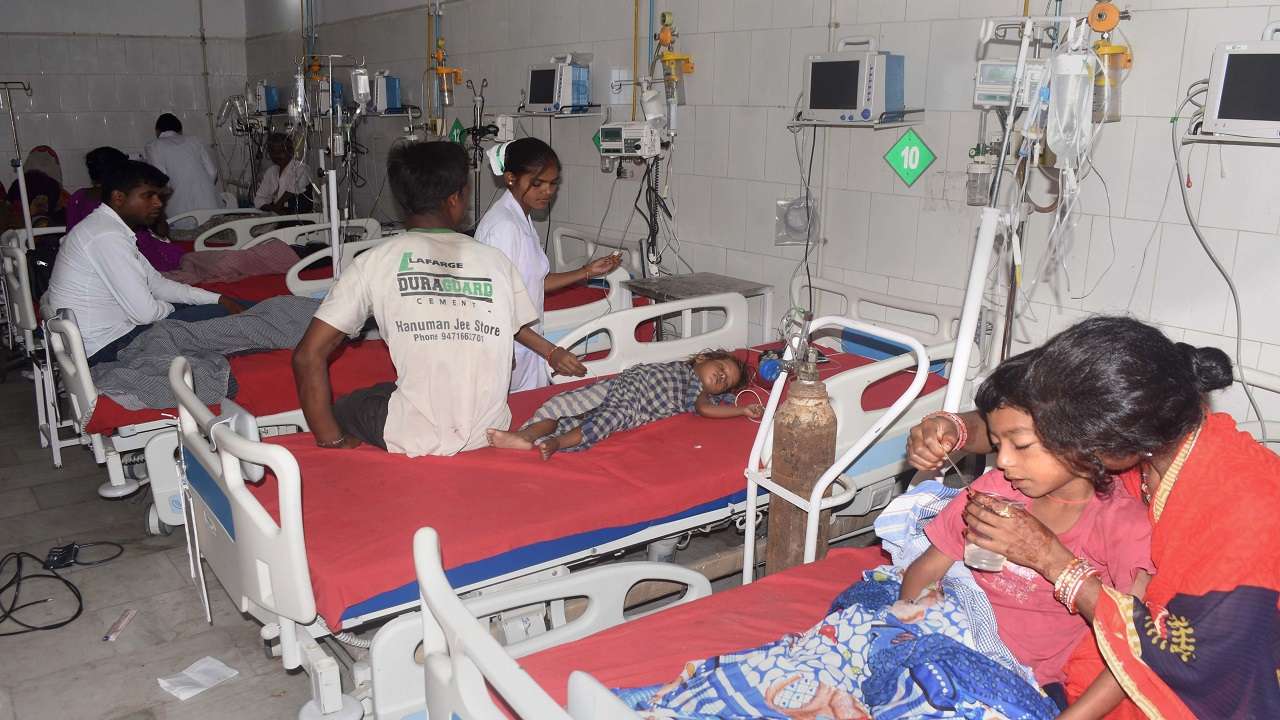Malnutrition or toxin litchi, check out what is causing Epidemic in Bihar:
These days you must be hearing words like “Litchi Havoc”, Chamki Bhukar, Killer Encephalitis, Deadly Litchi Toxin, as they are being used to report the epidemic in Bihar. In June 2019 the cyclic return of Acute Encephalitis Syndrome (AES) or Chamki fever to one of India’s poorest and malnourished states, Bihar, lead to hospitalization of 309 children in Muzaffarpur.
Though, over a hundred children have already been cured and discharged from Sri Krishna Medical College and Hospital. 85 children have died at the hospital
Identification:
The broad characteristics of AES define it as a group of clinically similar neurologic manifestations caused by several different viruses, bacteria, fungus, parasites, chemicals or toxins, etc.

Dr. TJ John, former president of the Indian Association of Pediatrics (IAP) and Emeritus Professor of Virology at the Christian Medical College in Vellore, has called AES “a meaningless term” given that “any brain disease in the child may be called AES”.
He explained: “AES is a term used by untrained health workers to say that a child has some brain disease like convulsion, unconsciousness, etc. But when a doctor examines the child, he must conclude which kind of AES disease it is: encephalitis (virus causing brain inflammation), meningitis (swelling of the protective membranes covering the brain and spinal cord), encephalopathy (broad term for any brain disease that alters brain function or structure) or cerebral malaria (severe neurological complication of infection with Malaria),”.
Doctor said a doctor must figure out the right disease between these four main categories when a case called AES is referred by a health worker.
In Muzaffarpur, despite intensive study by experts from the National Centre for Disease Control (NCDC), New Delhi and the Center for Disease Control (CDC), Atlanta (USA), there are two possible theories of the epidemic: one, caused by heat stroke, and two, caused by a toxin in locally-grown fruit, litchi.

Doctors claimed that deaths occurred due to “acclimatisation failure in children” and instead were caused by “environmental factors” such as the heat wave and poor rainfall in the area.
“Earlier people thought that outbreak is caused by a virus. But it is a case of heat stroke causing these deaths. In the years 2005, 2011, 2013, 2014 and 2019, when temperature and humidity were recorded over consecutive days at more 38 degrees Celsius and 50 per cent respectively, the epidemic had been at its worse with over 700 dying in 2014 alone,” the doctor said.
He added that rainfall is the only remedy to this outbreak. “When it rained a few days ago, the following day witnessed a drop in the number of AES patients in the hospital. Now when it hasn’t rained, the numbers are increasing,” he said.
Refuting the litchi theory, Dr Shankar asked if people had stopped eating litchis during the years when there were no cases of AEC in Muzaffarpur. “Sick children also do not have symptoms of abdominal pain to prove the litchi theory,” he pointed out.
Another doctor described: “The human angle has always been ignored. It is criminal to say that the deaths are not a case of AES,” he said. “These deaths have had the same symptoms from the past two decades. Poor, malnourished children stay hungry and they pick up to eat anything they find in the gardens like litchis. The government in Bihar is trying to divert the issue of malnutrition instead of taking it up seriously.”
He also added: Beyond deaths, for those who survive the disease, malnutrition also pushes them towards “a survival with neurological deficit”.
The National Human Rights Commission (NHRC) on Monday sent notices to the health ministry and Bihar government over the increasing deaths of children in Muzaffarpur.
We hope the government soon takes action to avoid these deaths and situations.














